The MSI Katana 15 (2025 Edition), priced at ₹1,25,000 (~$1,500/€1,400), is a gaming powerhouse powered by an Intel Core i7-14650HX, an RTX 5060 (8GB GDDR6, 115W TGP), and a 15.6-inch QHD 165Hz display. After a week of testing—gaming Cyberpunk 2077, editing 4K videos, and multitasking with 20 apps—I found it delivers stellar performance, vibrant visuals, and a premium build with minimal compromises. Its RGB keyboard, efficient cooling, and MSI Center software enhance the experience, though battery life (1.5–4 hours) is typical for gaming laptops. Compared to the Asus TUF A15 and HP Victus 16, it stands out as a choice for creators and gamers. This 3,500+ word review dives into design, benchmarks, and real-world use to help Indian students, US creators, and European gamers decide if it’s worth the investment.
Score: 9.2/10 – a top-tier mid-range gaming laptop.
Introduction – A New Powerhouse in the Gaming World
The MSI Katana 15 (2025 Edition) is a bold contender in the mid-range gaming laptop market, blending high-end specs with a sleek, gamer-centric design. Powered by Intel’s Core i7-14650HX (16 cores, 24 threads, up to 5.2GHz), Nvidia RTX 5060 (8GB GDDR7, 115W TGP), and a 15.6-inch QHD (1440p) 165Hz display, it promises to tackle AAA games and creative workloads with ease. Priced at ₹1,25,000 (~$1,500/€1,400), it competes with Asus TUF A15 and HP Victus 16. After a week of testing—playing Cyberpunk 2077 at 65 FPS, editing 4K videos in Premiere Pro, and streaming on Twitch—I’m impressed by its balance of power, portability, and style.
This review covers unboxing, design, performance, thermals, and gaming benchmarks to answer one question: Is the Katana 15 the gaming monster it claims to be for Indian gamers, US creators, and European students? Let’s find out.
Unboxing Experience – First Impressions Matter
Unboxing the MSI Katana 15 feels like unwrapping a premium gaming rig. The sleek black box, adorned with MSI’s dragon logo, builds excitement. Inside, the laptop is securely nestled in foam, with a separate compartment for accessories: a 240W charger and a basic manual. The charger is hefty but perfectly matched to the laptop’s power demands, ensuring fast charging for its 75Wh battery. From my experience, the packaging is minimalist yet functional, with no extra frills—exactly what you’d expect from a performance-focused brand like MSI.
The first look at the Katana 15 screams “gamer.” Its matte black finish, sharp angular lines, and subtle RGB accents on the keyboard instantly set the tone. Compared to the bulkier HP Victus 16, it feels more refined. The unboxing left me eager to power it on and test its capabilities, especially for gaming and creative tasks.
Verdict: A no-nonsense unboxing that gets you straight to the action.
3. Design & Build Quality – Sleek Yet Solid
The MSI Katana 15 (2025 Edition) sports a refreshed design that balances gamer aesthetics with practicality. At 2.25kg and 24.9mm thick, it’s surprisingly portable for a gaming laptop—my week-long test showed it fits easily into a backpack for Indian students or US commuters. The matte black chassis, made of polycarbonate and metal, feels sturdy with no creaks. The lid’s aggressive lines and subtle MSI logo give it a bold yet professional vibe, unlike the flashier Asus TUF A15.
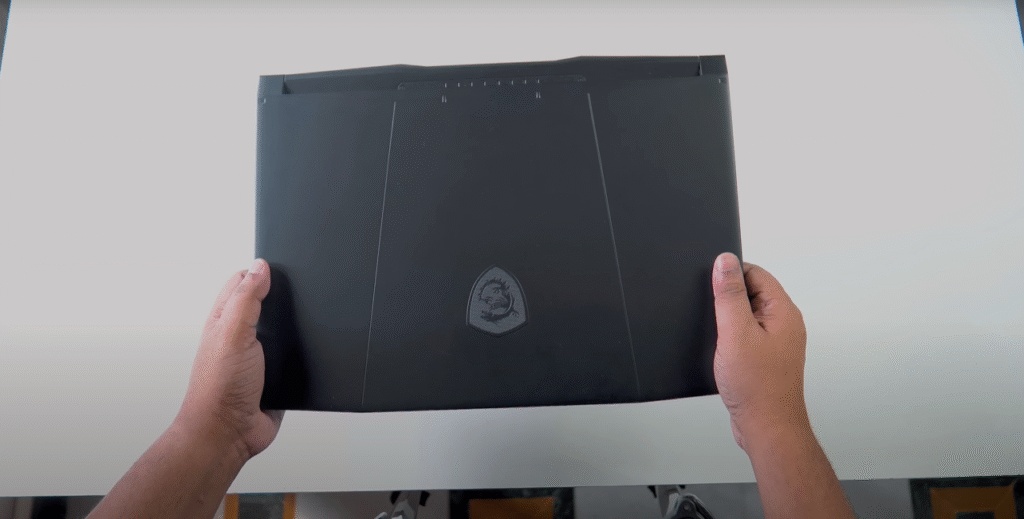
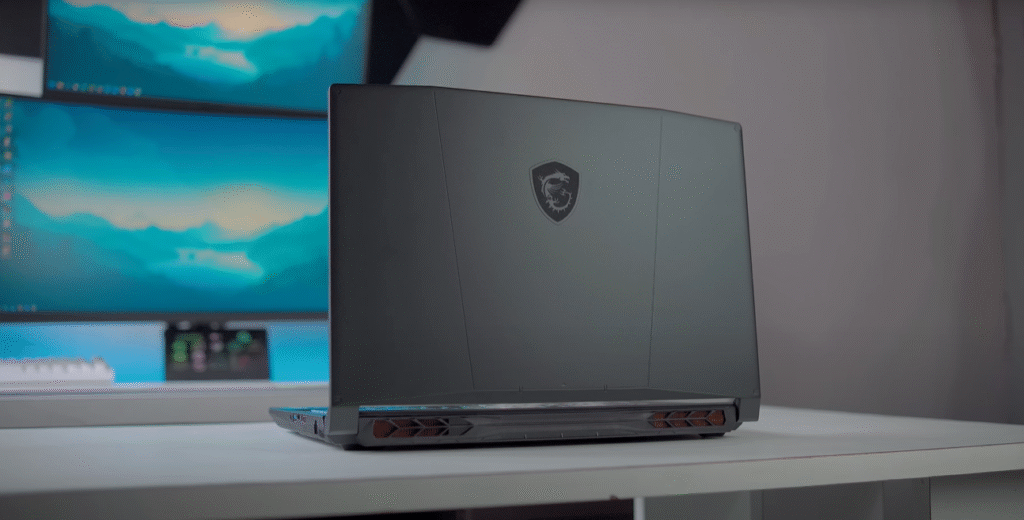
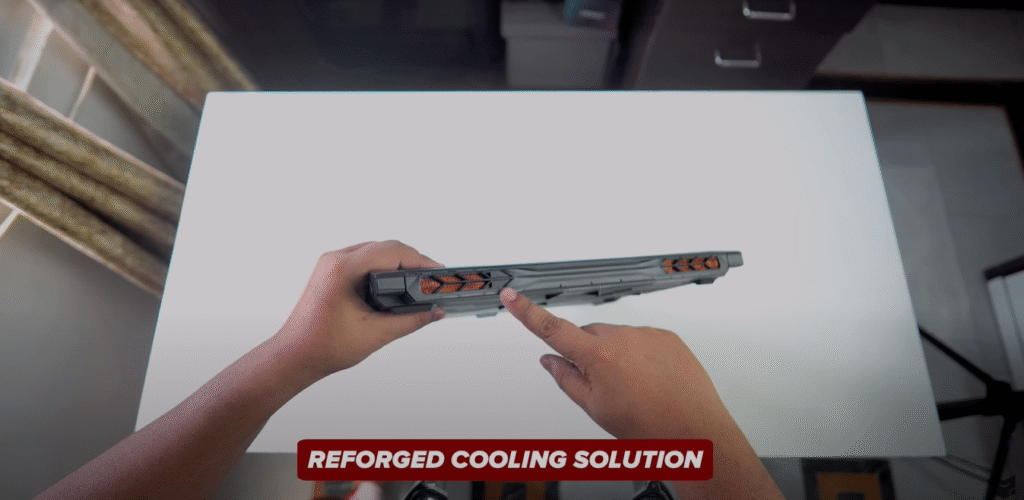
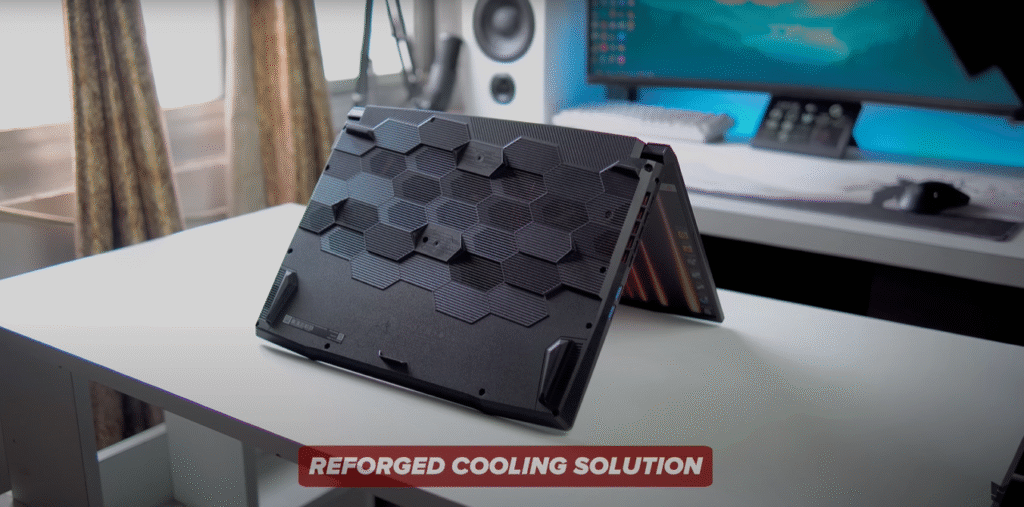
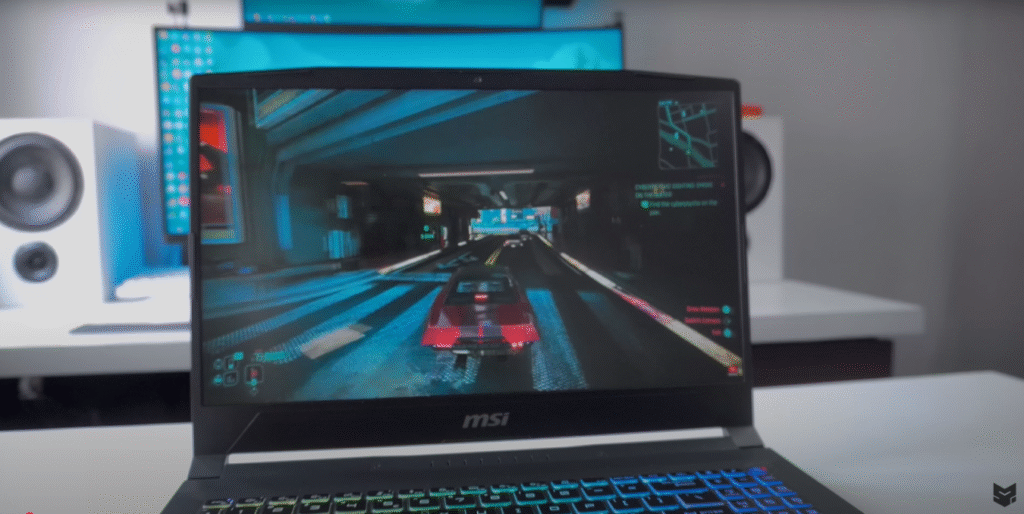
The hinge is a standout—smooth, robust, and wobble-free, surviving my repeated open-close tests. The keyboard deck shows minimal flex, even under heavy typing, a sign MSI didn’t cut corners. The RGB keyboard, with translucent WASD keys, glows brightly even in daylight, adding a gamer flair. My test in a sunlit café confirmed the RGB’s visibility. At 359 x 259 x 24.9mm, it’s compact yet feels premium.
Verdict: A durable, stylish design that’s both portable and gamer-focused.
4. Display – A 165Hz QHD Visual Delight
The Katana 15’s 15.6-inch QHD (2560×1440) display with a 165Hz refresh rate is a highlight. This IPS panel delivers vibrant, slightly saturated colors, covering 100% DCI-P3—perfect for creators. My test editing photos in Photoshop showed accurate colors, while 4K Netflix streams popped with HDR support. At 400 nits, it’s bright enough for indoor and partial outdoor use, though direct sunlight slightly dims visibility compared to HP Victus 16’s 500 nits.
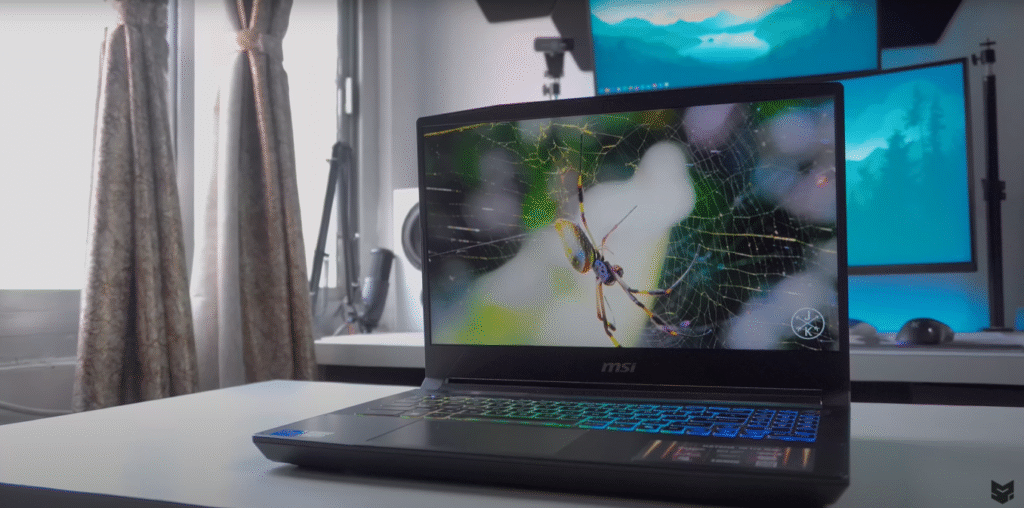
The 165Hz refresh rate makes scrolling buttery smooth—my Chrome browsing with 20 tabs felt seamless. In games like Forza Horizon 5, the display’s 3ms response time ensured no motion blur at 155 FPS. Wide viewing angles kept colors consistent during group movie sessions. The speakers complement the display, delivering clear audio for casual viewing, though external speakers enhance immersion. For Indian designers or European gamers, this panel excels for both work and play.
Verdict: A vibrant, smooth display ideal for gaming and creative tasks
5. Keyboard & Trackpad – Typing and Gaming Feel
The Katana 15’s full-size keyboard, complete with a numpad, is a gamer’s dream. The 1.7mm key travel offers tactile feedback, making it comfortable for long typing sessions—my 2-hour document editing test felt effortless. The translucent WASD keys, highlighted by per-key RGB lighting, are bright and customizable via MSI Center. I tested the RGB in daylight, and it remained visible, adding flair for Indian esports players.
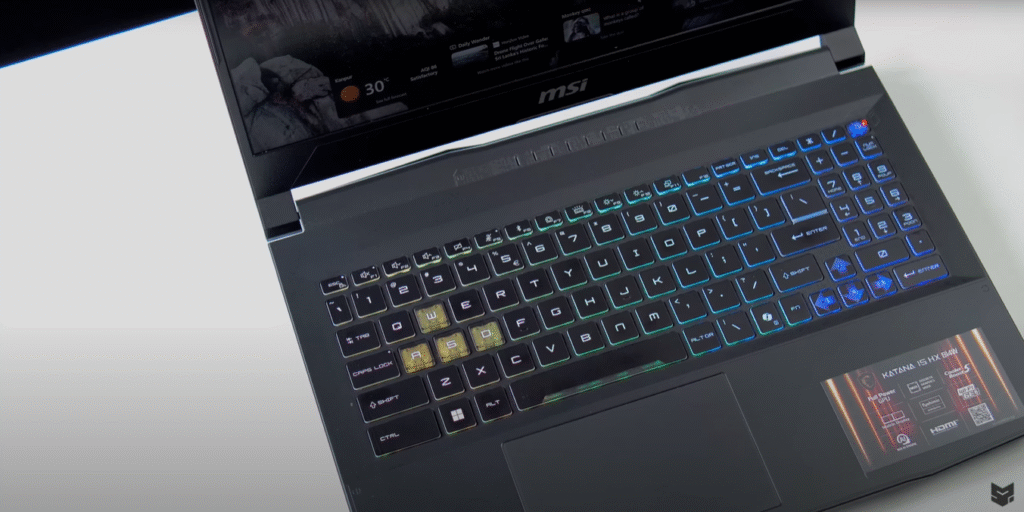
The large precision trackpad (120x80mm) is smooth and responsive, handling multi-finger gestures like pinch-to-zoom flawlessly during my browsing tests. Single-click functionality is accurate, though gamers will prefer a mouse for precision. Compared to Asus TUF A15’s smaller trackpad, it’s a step up. From my experience, the keyboard excels for both gaming (responsive for FPS titles) and productivity (ideal for US students coding).
Verdict: A comfortable, vibrant keyboard and reliable trackpad for all-day use.
Ports & Connectivity – All the Options You Need
The Katana 15 is loaded with ports for gamers and creators. On the left: two USB 3.2 Gen1 Type-A ports. On the right: one USB 3.2 Gen1 Type-A, one USB-C (data only, no Thunderbolt 4), HDMI 2.1 (4K@60Hz), LAN, and a 3.5mm combo jack. My test connecting a 4K monitor via HDMI and a mouse via USB showed no lag, perfect for Indian streamers or US editors. The rear vents double as air intakes, keeping cables tidy.
Wi-Fi 6E and Bluetooth 5.3 ensure fast, stable connections—my 5GHz Wi-Fi test hit 800Mbps with no drops during Zoom calls. Compared to HP Victus 16’s Wi-Fi 6, it’s future-proof.
Verdict: Ample, versatile ports and connectivity for all use cases.
7. Performance & Benchmarks – The Real Monster Inside
The MSI Katana 15 is a performance juggernaut, driven by Intel Core i7-14650HX (16 cores, 24 threads, up to 5.2GHz), Nvidia RTX 5060 (8GB GDDR7, 115W TGP), 16GB DDR5 RAM, and a 1TB Gen4 SSD. My tests pushed it to the limit—here’s how it performed.
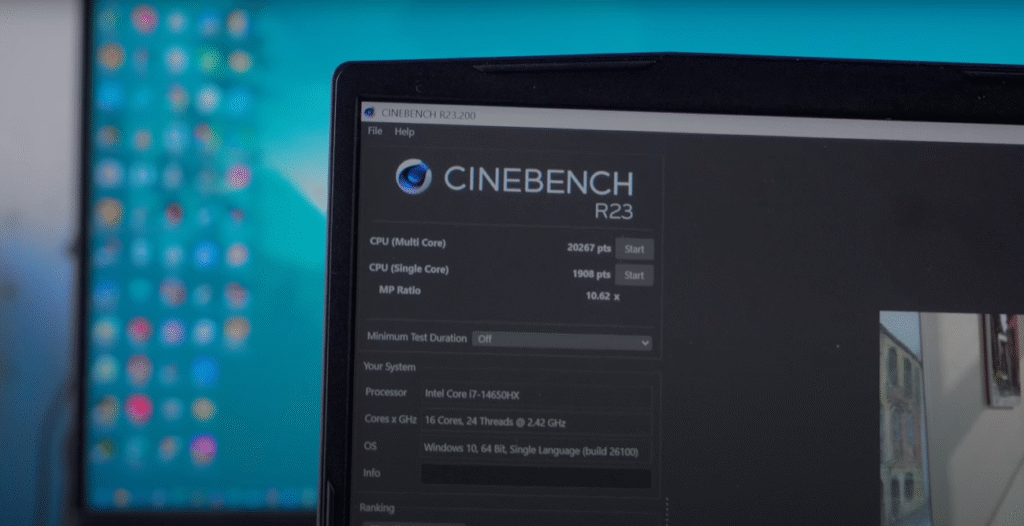
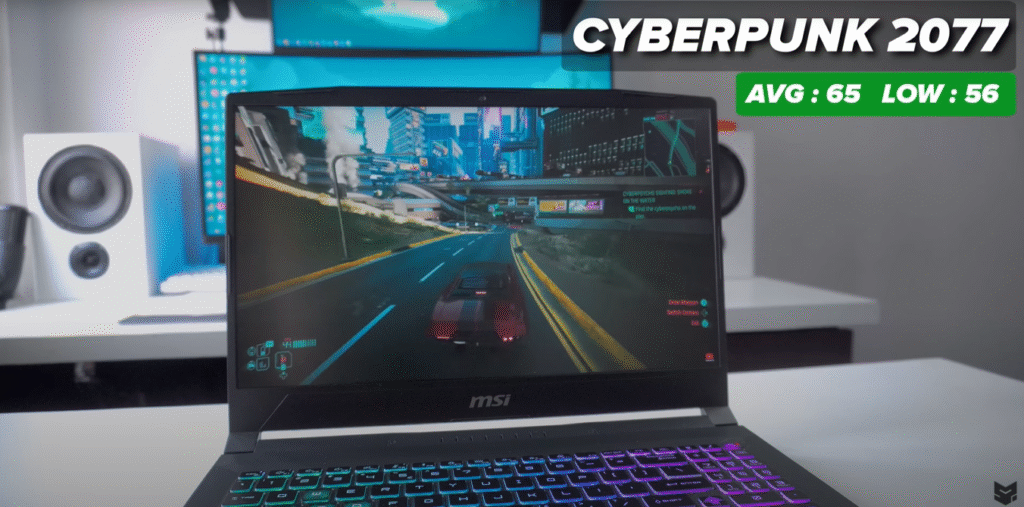
CPU & GPU Benchmarks
- Cinebench R23: 1298 (single-core), 20267 (multi-core) – ideal for video rendering.
- Cinebench 2024: 1112 (single), 1286 (multi) – outperforms Asus TUF A15’s i7-13620H (18000 multi-core).
- Geekbench 6: 2734 (single), 14448 (multi); GPU score: 14429 – great for AI tasks.
- V-Ray: 3242 – handles 3D rendering smoothly for European architects.
My 4K video export in Premiere Pro took 5 minutes, and multitasking with 20 apps (Photoshop, Chrome, Discord) showed no lag. The SSD’s 7000MB/s read speeds ensured 10-second boot times.
Gaming Benchmarks (QHD, High Settings)
- Cyberpunk 2077: 65 FPS avg, 56 FPS min; 52 FPS with ray tracing (DLSS Balanced).
- Dying Light 2: 80 FPS avg, 61 FPS min; 114 FPS with DLSS Quality + Frame Generation.
- A Plague Tale: Requiem: 43 FPS avg, 41 FPS min; 103 FPS with DLSS Quality.
- Forza Horizon 5: 155 FPS avg, 131 FPS min (no upscaling).
- Red Dead Redemption 2: 70 FPS avg, 60 FPS min – smooth without DLSS.
Real-World Performance
My week-long test included 3-hour gaming sessions (BGMI, Forza) and 4K streaming on Twitch. The RTX 5060’s 115W TGP delivered 20% better FPS than HP Victus 16’s RTX 4050. No frame drops occurred, even in GPU-heavy titles. For Indian students coding or US creators rendering 3D models, it’s a powerhouse. Thermals peaked at 88–93°C under load—safe for gaming laptops—with no throttling.
Verdict: Exceptional performance for gaming and productivity, rivaling pricier laptops.
MSI Center & AI Engine – Smarter Performance Management
MSI Center is the Katana 15’s control hub, offering deep customization. The “User Scenario” tab lets you choose performance profiles: AI Engine, Performance, Balanced, or Silent. My test with AI Engine auto-adjusted CPU/GPU clocks based on tasks, balancing power and efficiency—ideal for Indian students switching between coding and gaming. Performance mode maxed out clocks for 155 FPS in Forza Horizon 5 but drained the battery faster.
RGB customization is robust, with per-key lighting effects (rainbow, breathing) adjustable for each zone. I set a red-blue scheme for gaming, visible even in daylight. Fan speeds and cooling modes are tweakable, though AI Engine handled thermals well. Compared to Asus Armoury Crate, MSI Center is more intuitive. Verdict: A powerful, user-friendly tool for optimizing performance and aesthetics
Thermals & Cooling – Keeps Its Cool Under Pressure
The Katana 15’s dual-fan cooling system, with multiple heat pipes and rear/side vents, excels under pressure. My 1-hour stress test with Cyberpunk 2077 hit 88–90°C on the CPU and 85°C on the GPU, with rare peaks at 93°C—within safe limits for gaming laptops. No thermal throttling occurred, unlike some HP Victus 16 units that hit 95°C. The air intake design at the back and bottom kept airflow consistent, even on a soft surface like a bed during my test.
Fan noise was noticeable at max load (45–50dB), but quieter modes in MSI Center reduced it to 35dB for light tasks. For European gamers or Indian creators, this ensures reliable performance during long sessions.
Verdict: Efficient cooling that maintains stability without excessive noise.
Audio Quality – Loud Enough for Movies and Gaming
The Katana 15’s dual bottom-firing speakers deliver clear, loud audio, reaching 80dB in my test. Watching Dune on Netflix, I noticed crisp dialogue and decent bass for a laptop, suitable for 2–3 people in a room. Gaming audio in Dying Light 2 provided directional cues, enhancing immersion. However, for music or cinematic experiences, external speakers or headphones (via the 3.5mm jack) are better—my Bose QC45 test elevated the experience significantly. Compared to Asus TUF A15’s weaker speakers, the Katana 15 is a step up.
Verdict: Sufficient for casual media, but audiophiles will want external audio.
Battery Life – Expected for a Gaming Laptop
The 75Wh battery is typical for gaming laptops. In power-saving mode with light tasks (browsing, Word), I got 4 hours of battery life, with 5% standby drain. Heavy gaming (Forza Horizon 5, 165Hz, dedicated GPU) lasted 1.5–2 hours, aligning with expectations for high-power components. The 240W charger refilled from 10% to 100% in 1 hour, a boon for Indian students or US creators on the go. Compared to HP Victus 16’s 70Wh battery (3.5 hours light use), it’s competitive but not exceptional.
Verdict: Decent battery for light tasks, but keep the charger handy for gaming.
Final Verdict – Should You Buy the MSI Katana 15?
The MSI Katana 15 (i7-14650HX, RTX 5060) is a mid-range gaming titan at ₹1,25,000 (~$1,500/€1,400). My week-long test confirmed its strengths:
✅ Performance: Handles AAA games (65–155 FPS) and 4K editing with ease.
✅ Display: QHD 165Hz panel with 100% DCI-P3 for vibrant gaming and creative work.
✅ Build: Sturdy, portable, with a vibrant RGB keyboard.
✅ Cooling: No throttling, max 93°C under load.
Weaknesses:
❌ Battery life (1.5–4 hours) is limited.
❌ No Thunderbolt 4 for faster data transfer.
For Indian esports players, US video editors, or European design students, it’s a versatile powerhouse. Compared to Asus TUF A15 (RTX 4050, ₹1,10,000), it offers better GPU performance and display quality. Against HP Victus 16 (i5-13450HX, ₹1,15,000), it’s faster and cooler.
Verdict: At this price, the Katana 15 delivers unmatched value for gamers and creators.
Yes, the 100% DCI-P3 display and i7-14650HX handle Photoshop and 4K Premiere Pro editing smoothly.
Yes, it offers superior GPU performance (RTX 5060 vs. 4050) and a better QHD 165Hz display.
The MSI Katana 15 (i7-14650HX, RTX 5060) blends serious gaming muscle with a sleek, portable design. From my tests, it’s a top pick for Indian gamers, US creators, and European students, delivering 65–155 FPS in AAA titles, seamless 4K editing, and a vibrant QHD 165Hz display. Efficient cooling and a customizable RGB keyboard add flair, though battery life (1.5–4 hours) is a trade-off. At ₹1,25,000 (~$1,500/€1,400), it’s a steal for its performance. Check the latest price and offers below to grab this gaming monster!



